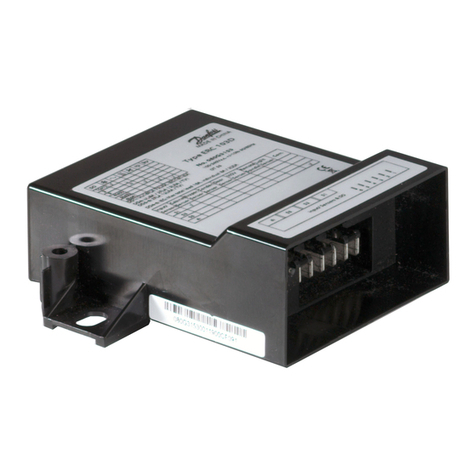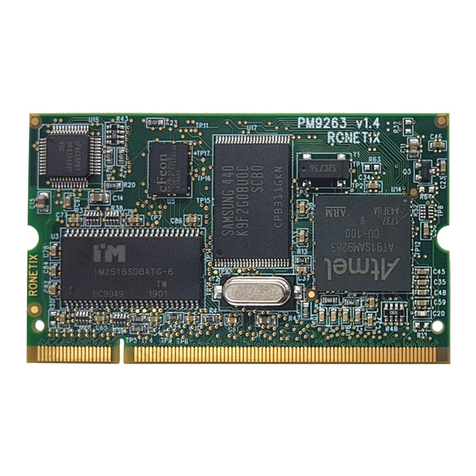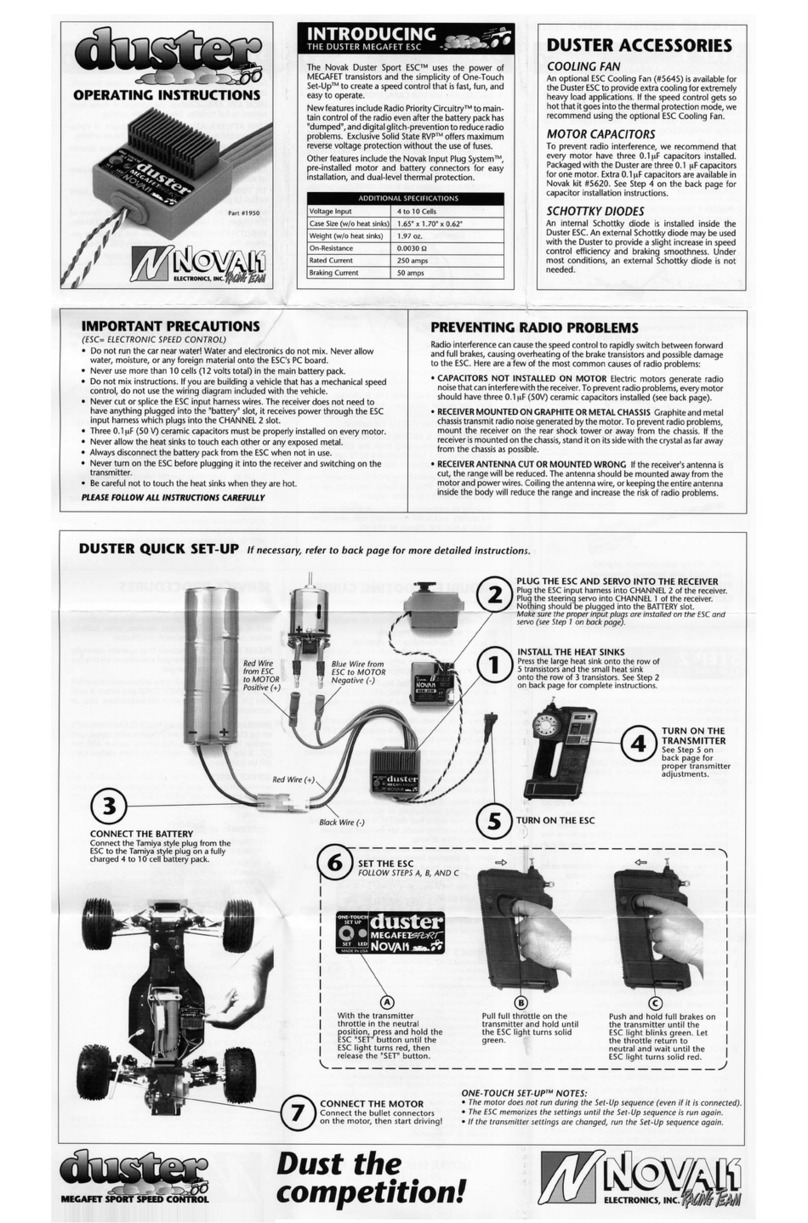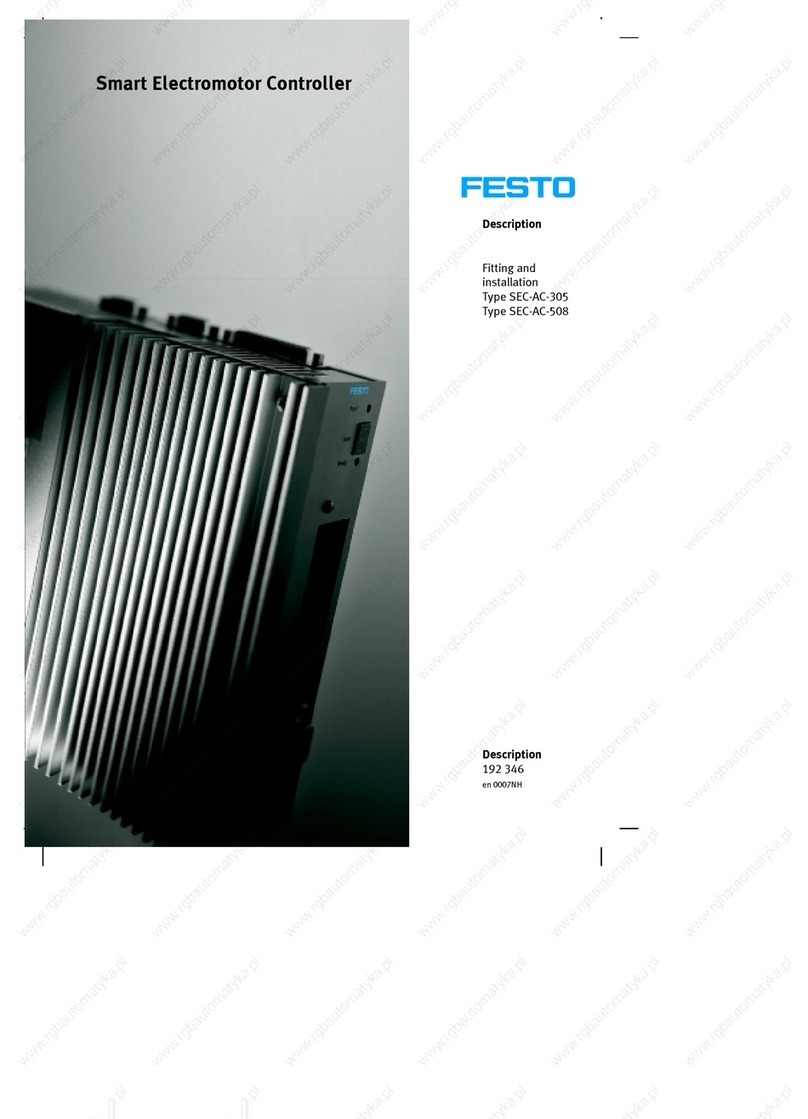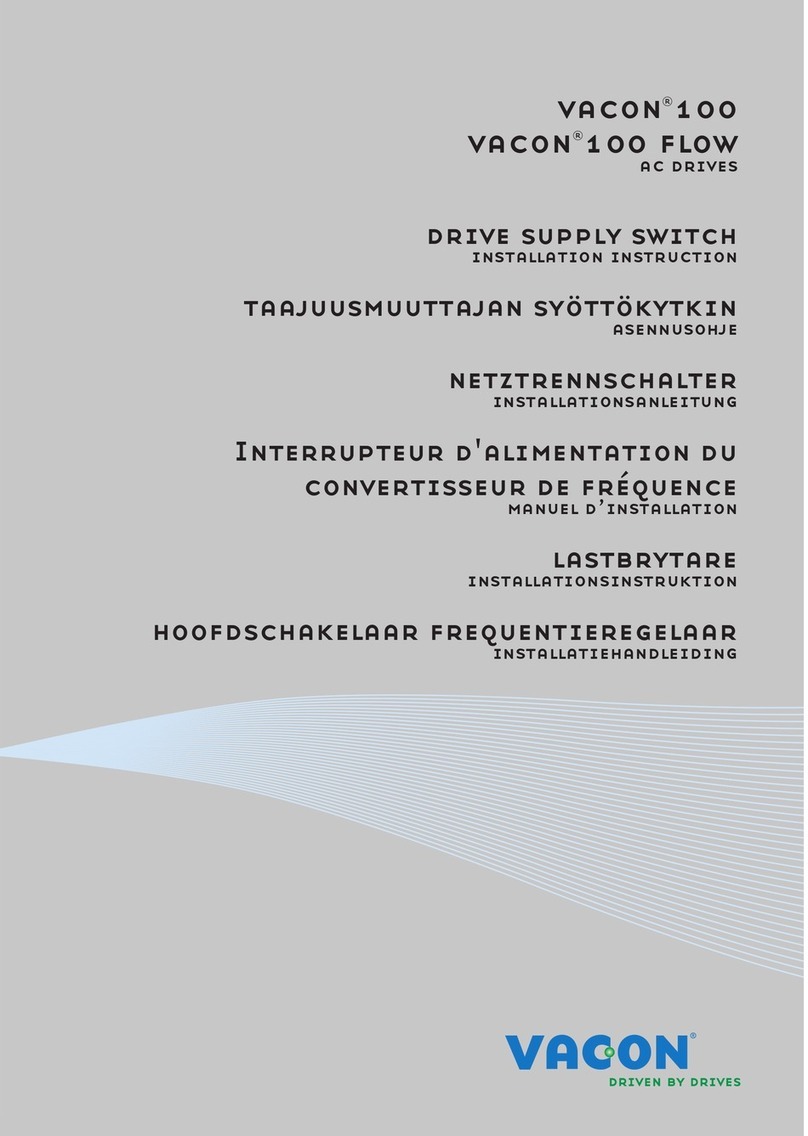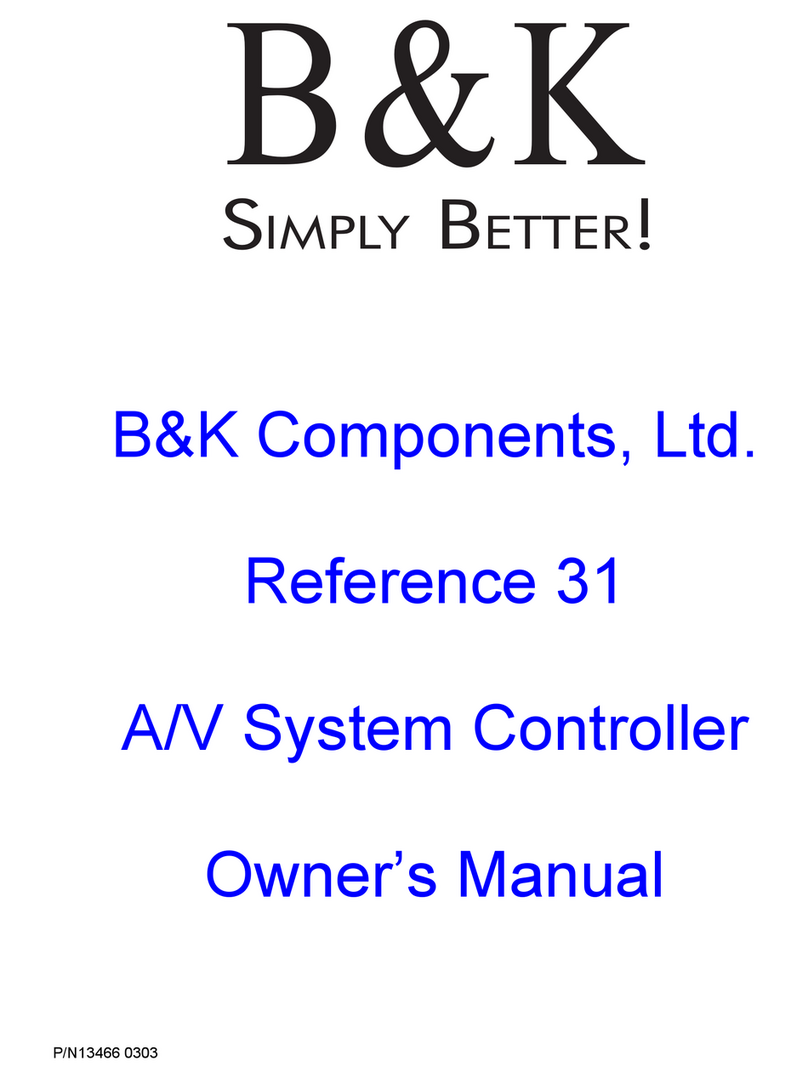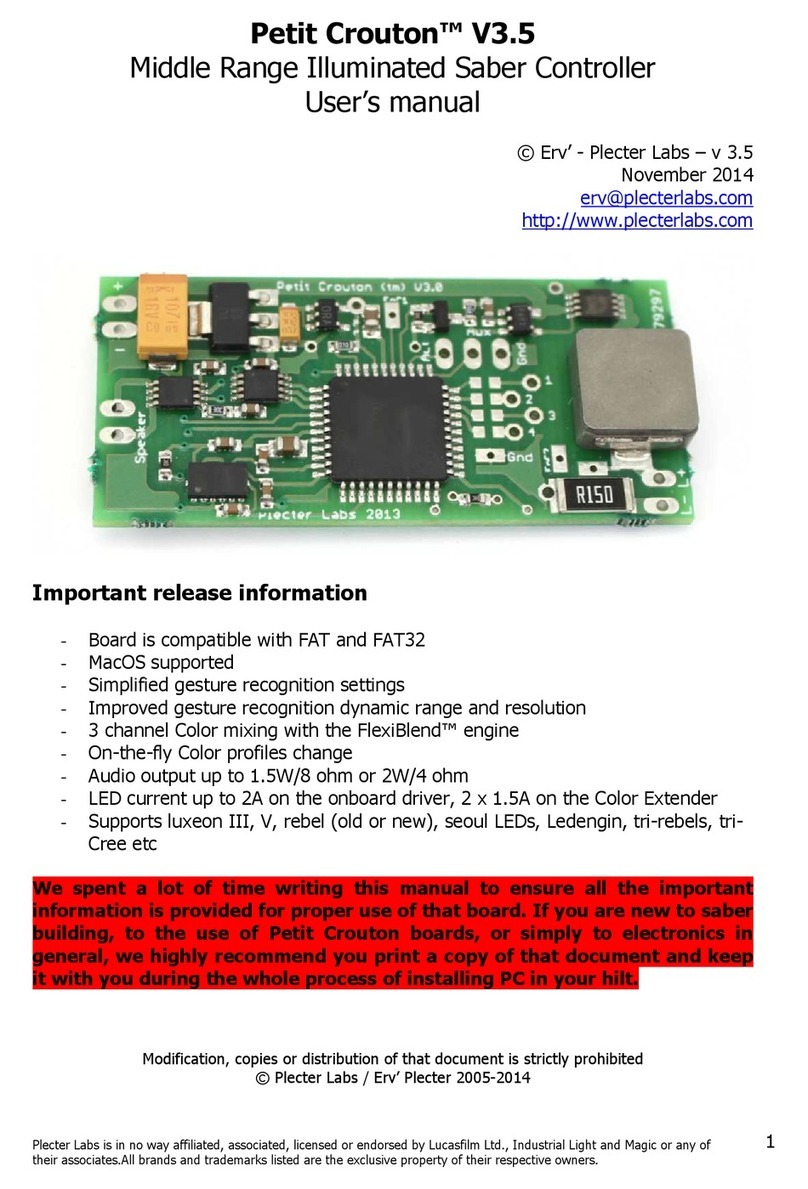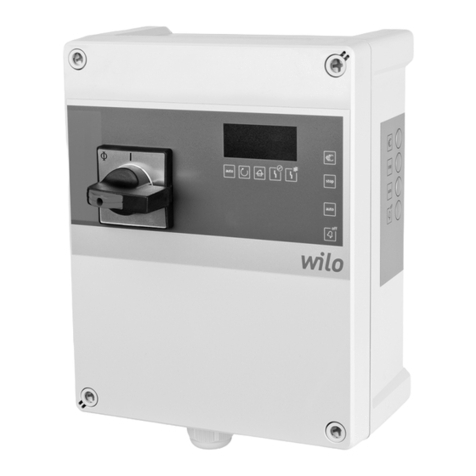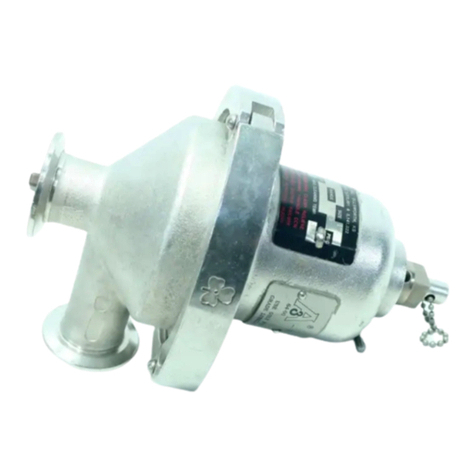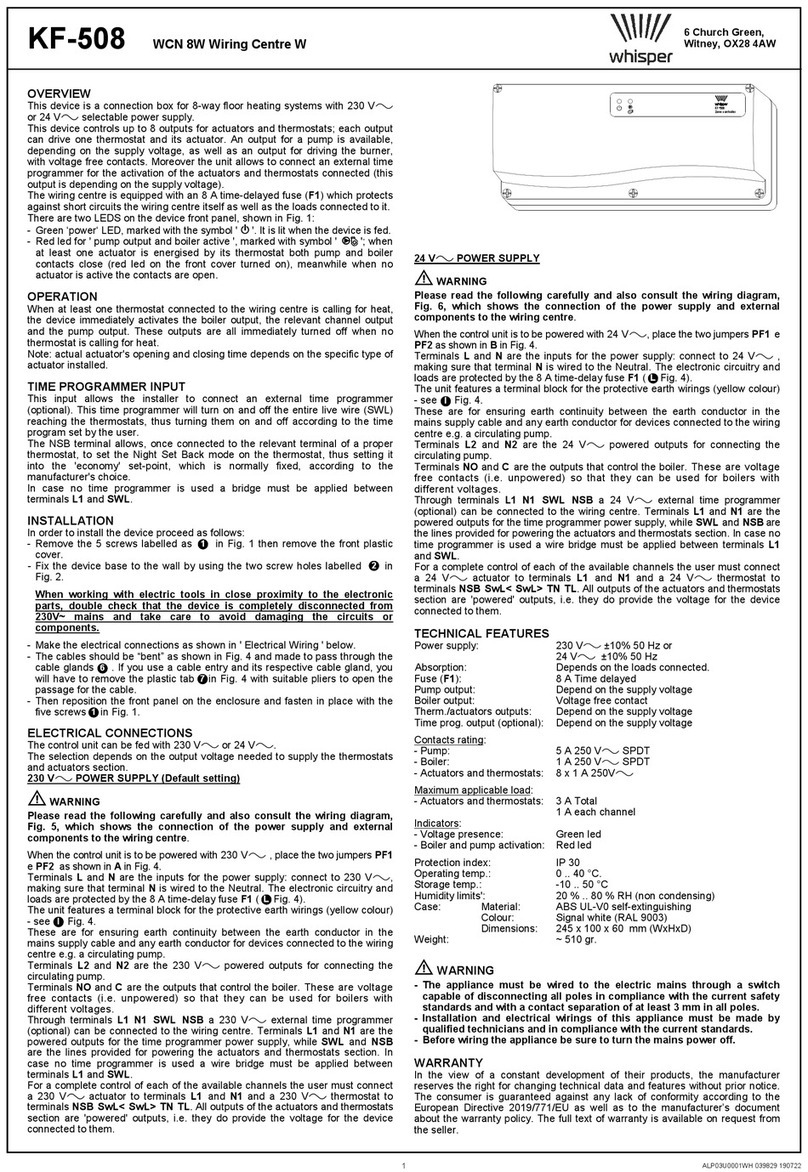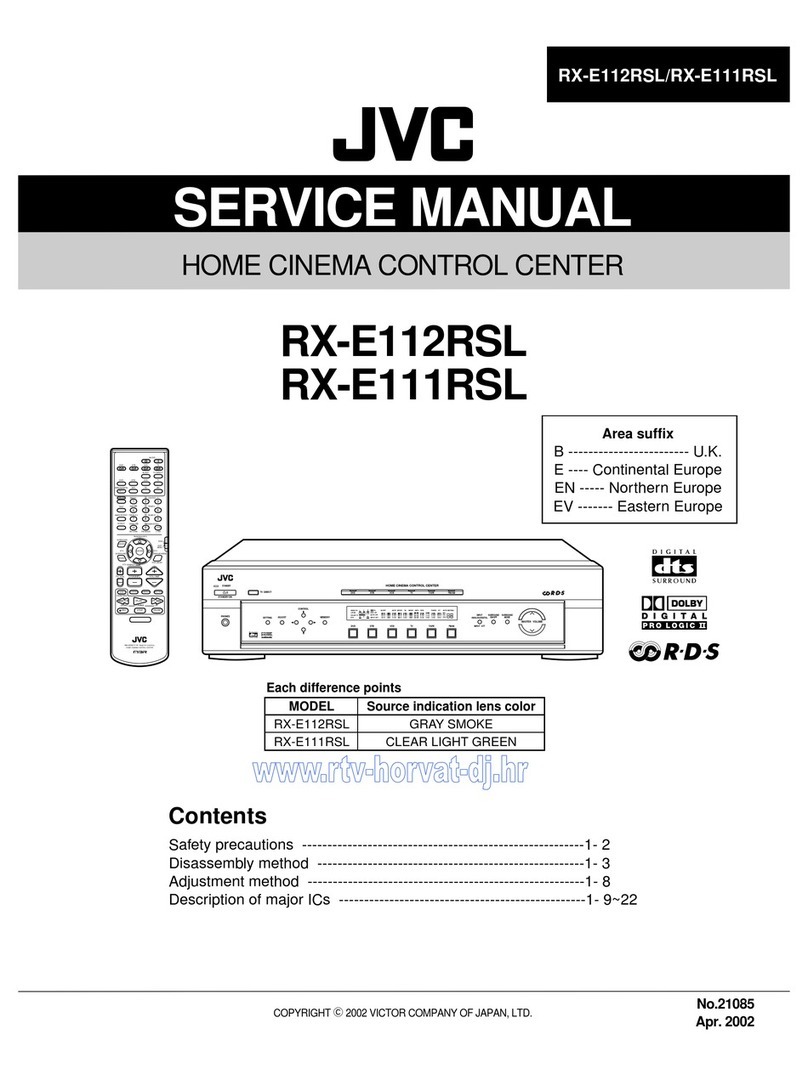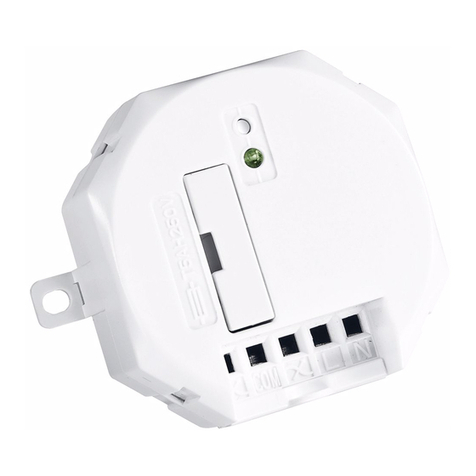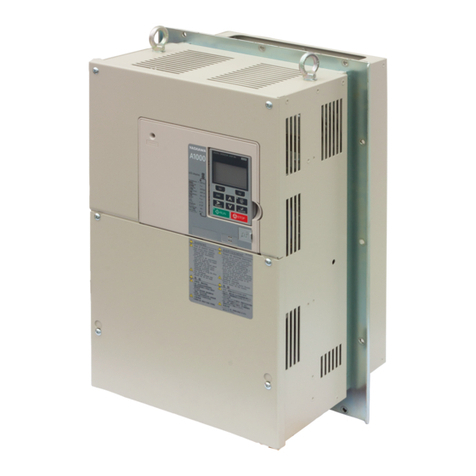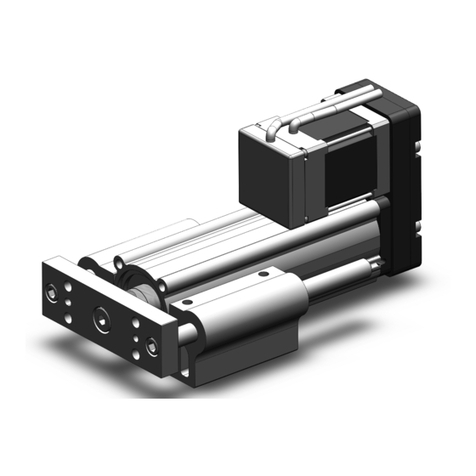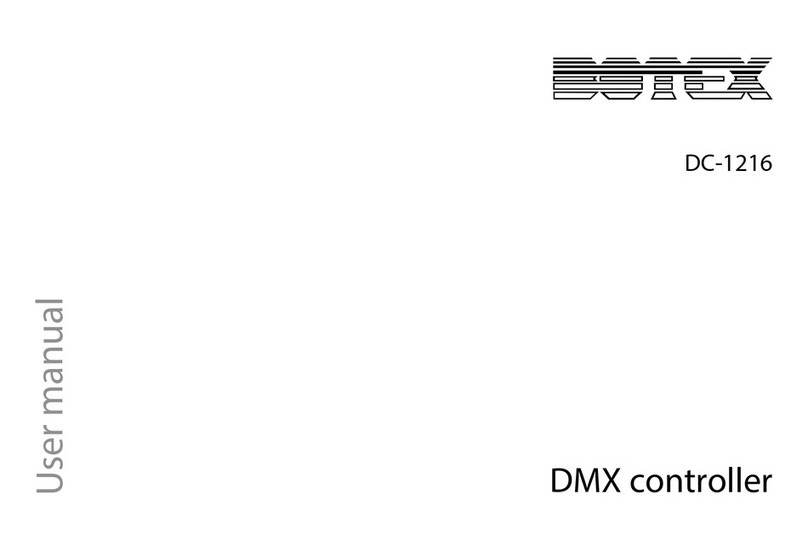Apeks DST User manual

TECHNICAL MAINTENANCE MANUAL
DST FIRST STAGE

2
Change No. Date Title or description Change made by
CHANGE RECORD

3
DST First Stage Technical Maintenance Manual
CONTENTS
INTRODUCTION.................................................................................4
FIRST STAGE DISASSEMBLY PROCEDURES ................................5
FIRST STAGE REASSEMBLY PROCEDURES .................................8
ADJUSTING THE FIRST STAGE .....................................................12
FIRST STAGE FINAL ASSEMBLY...................................................12
FINAL TESTING ...............................................................................13
TABLE 1: FIRST STAGE TROUBLESHOOTING GUIDE ................14
TABLE 2: LIST OF TOOLS AND SERVICE KITS............................15
TABLE 3: TORQUE SPECIFICATIONS ...........................................16
TABLE 4: TEST BENCH SPECIFICATIONS....................................16
TABLE 5: RECOMMENDED CLEANERS AND LUBRICANTS...... 16
PROCEDURE A: CLEANING AND LUBRICATING.........................17
MAINTENANCE NOTES...................................................................18
DST FIRST STAGE EXPLODED VIEW............................................19

4
This manual is copyrighted, all rights reserved. It may not, in whole or in
part, be copied, photocopied, reproduced, translated or reduced to any
electronic medium or machine-readable form without prior consent in
writing from Aqua Lung International. It may not be distributed through the
internet or computer bulletin board systems without prior consent in writing
from Aqua Lung International.
©2010 Aqua Lung International
Apeks DST First Stage Technical Maintenance Manual
This manual provides factory prescribed procedures for the correct service and
repair of the Aqua Lung®orApeks regulator products described in this manual.
It is not intended to be used as an instructional manual for untrained personnel.
The procedures outlined within this manual are to be performed only by
personnel who have received Factory Authorized training through an Aqua
Lung Service & Repair Seminar. If you do not completely understand all of
the procedures outlined in this manual, contact Aqua Lung to speak directly
with a Technical Advisor before proceeding any further.
NOTES are used to emphasize important points, tips and reminders.
CAUTIONS indicate any situation or technique that will
result in potential damage to the product, or render the
product unsafe if instructions are not followed correctly.
WARNINGS indicate a procedure or situation that may
result in serious injury or death if instructions are not
followed correctly.
If the regulator is subjected to less than 50 dives per year, it is
permissible to overhaul it every other year with an inspection
procedure being performed on the “off” years. For example:
Year #1: Inspection
Year #2: Overhaul
Year #3: Inspection
Year #4: Overhaul, and so on.
Both Inspections and Overhauls need to be documented in the Annual Service
& Inspection Record in the back of the Owner’s Manual to keep the Limited
Lifetime Warranty in effect. If a regulator is subjected to more than 50 dives
per year, it should receive the complete overhaul.
1. A pressurized immersion test of the entire unit to check
for air leakage.
2. Checking for stable intermediate pressure that is within
the acceptable range.
3. Checking for opening effort that is within the
acceptable range.
4. Checking for smooth operation of the control knob and
venturi switch.
5. A visual inspection of the lter for debris or discoloration.
6. A visual inspection of the exhaust valve to see that it is in
good shape and that it’s resting against a clean surface.
7. A visual inspection of the mouthpiece looking for tears
or holes.
8. Pulling back hose protectors and checking that the hoses
are secure in the hose crimps.
If a regulator fails item #1, 2, 3 or 4 the entire regulator should be overhauled.
If a regulator fails 5, 6, 7 or 8, it will be up to the technician’s discretion whether
or not a full overhaul is required.
NOTE: A unit that receives heavy or frequent use, such as rental, in-
struction, or commercial applications, should be serviced at least twice
a year - or more often - depending on the conditions of use and the
manner in which it is maintained. (Refer to the care and maintenance
procedures outlined in the Regulator Owner’s Manual.)
1. In order to correctly perform the procedures outlined in this manual,
it is important to follow each step exactly in the order given. Read
over the entire manual to become familiar with all procedures before
attempting to disassemble the product in this manual, and to learn
which specialty tools and replacement parts will be required. Keep
the manual open beside you for reference while performing each
procedure. Do not rely on memory.
2. All service and repair should be carried out in a work area
specically set up and equipped for the task. Adequate lighting,
cleanliness, and easy access to all required tools are essential for an
efcient repair facility.
3. As the regulator is disassembled, reusable components should be
segregated and not allowed to intermix with nonreusable parts or parts
from other units. Delicate parts, including inlet ttings and crowns
which contain critical sealing surfaces, must be protected and isolated
from other parts to prevent damage during the cleaning procedure.
4. Use only genuine Aqua Lung® parts provided in the overhaul
parts kit for this product. DO NOT attempt to substitute an Aqua
Lung® part with another manufacturer’s, regardless of any similarity
in shape or size.
5. Do not attempt to reuse mandatory replacement parts under any
circumstances, regardless of the amount of use the product has re-
ceived since it was manufactured or last serviced.
6. When reassembling, it is important to follow every torque
specication prescribed in this manual, using a calibrated torque
wrench. Most parts are made of either marine brass or plastic, and
can be permanently damaged by undue stress.
7. In order to make the regulator compatible with nitrox up to 40%
O2 (EAN40) after maintenance, the regulator must be properly
cleaned, lubricated and assembled using genuine Aqua Lung® or
Apeks replacement parts. In addition, assembly must be carried out
in a clean environment using powderless, latex gloves or equiva-
lent. For more detailed information, be sure to read Procedure A:
Cleaning and Lubrication at the back of this manual.
General Conventions
Unless otherwise instructed, the following terminology and techniques
are assumed:
1. When instructed to remove, unscrew, or loosen a threaded
part, turn the part counterclockwise.
2. When instructed to install, screw in, or tighten a threaded part, turn
the part clockwise.
3. When instructed to remove an o-ring, use the pinch method
(see illustration below) if possible, or use a brass or plastic o-ring
removal tool. Avoid using hardened steel picks, as they may damage
the o-ring sealing surface. All o-rings that are removed are discarded
and replaced with brand new o-rings.
Pinch Method
Press upwards on sides of o-ring to
create a protrusion. Grab o-ring or
insert o-ring tool at protrusion.
4. The following acronyms are used throughout the manual: MP is
Medium Pressure; HP is High Pressure; LP is Low Pressure.
5. Numbers in parentheses reference the key numbers on the
exploded par ts schematics. For example, in the statement,
“...remove the o-ring (7) from the crown (8)...”, the number 7 is
the key number to the crown o-ring.
Copyright Notice
Pay special attention to information provided in warnings, cautions and notes
that are accompanied by one of these symbols:
INTRODUCTION
Warnings, Cautions & Notes
Scheduled Service
An Ofcial Inspection Consists Of:
General Guidelines

CAUTION: The spring and spring carrier will come out once
the diaphragm clamp is completely removed. Ensure the rst
stage is over a workbench when removing the diaphragm
clamp to avoid losing or damaging parts.
CAUTION: Use only a plastic or brass o-ring removal tool
when removing o-rings to prevent damage to the sealing
surface. Even a small scratch across an o-ring sealing surface
could result in leakage. Once an o-ring sealing surface has
been damaged, the part must be replaced with new. DO NOT
use a dental pick or any other steel instrument.
NOTE: Before performing any disassembly, refer to the exploded
parts drawing, which references all mandatory replacement parts.
These parts should be replaced with new, and must not be reused
under any circumstances – regardless of the age of the regulator or
how much use it has received since it was last serviced.
NOTE: If during the removal of the enviromental end cap; the dia-
phragm clamp remains attached, you will need to use a second pin
spanner in the opposite direction to hold the clamp steady.
DST First Stage Technical Maintenance Manual 5
DISASSEMBLY PROCEDURES
1
Remove the MP hose with
a 9/16” wrench, remove
all remaining hoses from the
rst stage body. Use an o-ring
removal tool to remove the o-
ring from the male end of the
hose and discard. Check hose
crimps for any signs of dam-
age. Replace hose if needed.
3
Thread the vice mounting tool (pn 100395) clockwise into the open
HP port. Secure the vise mounting tool and rst stage into a bench
vise with the enviromental end cap (26) facing upward.
4
Insert the Apeks pin spanner (pn AT30) into the hole of the
environmental end cap (26). Ensure that the pin spanner is sitting
ush to avoid damage to the end cap. Turn the environmental end
cap counter-clockwise to remove it from the diaphragm clamp (21).
Remove and discard the hydrostatic diaphragm (25).
5
Rotate the first stage
and allow the hydrostatic
transmitter (23) to fall out of the
diaphragm clamp (21).
6
Rotate the rst stage so that the diaphragm clamp (21) is facing
upward. Use the pin spanner to turn the diaphragm clamp
counter-clockwise to loosen. Continue to unscrew the diaphragm
clamp by hand.
2
Using a 5mm hex key,
remove a single HP blanking
plug (19) by turning it counter-
clockwise.
7
Remove the spring (1) and spring carrier (2).

CAUTION: Never remove the diaphragm by prying or digging
around the edges. This will cause irreversible damage to the
rst stage body.
NOTE: You may encounter a new revision spring carrier. This
was an inline change. Either version of the spring carrier is ac-
ceptable to use.
6
8
Using a 6mm hex key, turn the spring adjuster (22) counter-
clockwise and remove it from the diaphragm clamp (21).
10
Rotate the body so that the turret (8) is facing upward. Insert
a 6mm hex key into the end of the turret retaining bolt (15)
and turn counter-clockwise to loosen. Lift the turret off of the body
(5). The spring (12) and HP valve (11) should come away with the
turret bolt. 14
Using a 5mm hex key,
remove the MP blanking
plugs (9,18). Remove the o-rings
(10,13) from the blanking plugs.
9
While keeping your nger over the diaphragm to prevent it from
ejecting, insert a LP air nozzle into a MP port and blast a small
amount of air into the rst stage. This will eject the diaphragm (3).
Pull the valve lifter (4) out of the rst stage body (5).
12
Remove the turret o-ring
(7) from the body (5). If
you do not see the o-ring, check
the inside of the turret (8).
11
Remove the turret retaining bolt (15) from the turret (8). Lift
out the o-ring (16) and blue thrust washer (14) from the top of
the turret.
13
Remove the spring(12)
and the HP valve (11)
from the turret (8). Remove the
o-ring (13) from the outside of
the turret retaining bolt (15) and
carefully remove the o-ring (17)
from the inside.
Original Spring Carrier Revised Spring Carrier

DST First Stage Technical Maintenance Manual 7
1
Rotate the body so that the yoke screw (30) is facing upward. Turn
the yoke screw counter-clockwise and remove it from the yoke
clamp (27). Remove the protective cap (28) from the yoke clamp.
Yoke Disassembly
2
Using a ¾inch closed end
wrench, turn the yoke
clamp connector (32) counter-
clockwise to remove it. Lift off the
yoke clamp (27) and distance
piece (6).
3
Remove the conical lter (36) and o-ring (10) from the yoke
clamp connector (32).
1
Remove the dust cap (33). Rotate the body so that the DIN
handwheel (35) is facing upward. Using a 6mm hex key, turn the
handwheel connector (34) counter-clockwise to loosen. Lift off the
handwheel connector, handwheel and distance piece (6).
DIN Disassembly
2
Using the end of the seat tool
(pn 109437), push the conical
lter (36) and o-ring (10) out of the
handwheel connector (34).
3
Remove the face o-ring
(29) from the handwheel
connector (34).
4
Use a 6mm hex key to carefully push the lter guard (31) out of
the yoke clamp connector (32).

8
Before starting reassembly, perform parts
cleaning and lubrication in accordance with
Procedure A: Cleaning and Lubricating on
page (17).
1
Install the valve lifter (4) into the center hole in the body (5).
3
Place the spring carrier (2) on top of the diaphragm (3), followed
by the spring (1).
REASSEMBLY PROCEDURES
NOTE: Before performing any reassembly, it is important to inspect
all parts, both new and those that are being reused, to ensure that
every part and component is perfectly clean and free of any dust,
corrosion, or blemishes. Before dressing each o-ring with Christo-
Lube®, check to ensure it is clean, supple, and free of any blemish.
WARNING: Use only genuine Aqua Lung®parts, subas-
semblies, and components whenever assembling any Aqua
Lung®product. DO NOT attempt to substitute an Aqua Lung®
part with another manufacturer’s, regardless of any similar-
ity in shape, size or appearance. Doing so may render the
product unsafe, and could result in serious injury or death.
4
Use a 6mm hex key to thread the spring adjuster (22) clockwise
into the diaphragm clamp (21) far enough for a couple of threads
to catch.
2
Seat the diaphragm (3)
evenly into the body (5) on
top of the valve lifter (4).
6
Install the vise mounting tool
into the HP port and secure in
a bench vise.
5
Thread the diaphragm clamp (21) clockwise to the body (5) by
hand until snug.
THIS CONCLUDES THE DISASSEMBLY
OF THE DST FIRST STAGE
1
Remove the body (5) from the bench vise and unthread the vise
mounting tool. Use a 5mm hex key to remove the hp blanking plug
(19), remove the o-ring (20) from the plug.
Continuation of Disassembly

DST First Stage Technical Maintenance Manual 9
7
Using the Apeks spanner
wrench (pn AT30), tighten
the diaphragm clamp (21)
clockwise until you get metal to
metal contact.
9
Turn the first stage over,
holding the HP valve (11) by
the stem, insert it into the center
hole in the body (5).
11
Install the o-ring (7) onto
the body (5).
13
Install the blue washer (14) into the turret (8).
15
Install the small o-ring
(17) into the turret bolt
(15). Place o-ring (13) at the
base of the threads.
12
Place the turret (8) onto the body (5) and carefully push
down.
14
Place the o-ring (16) on top of the blue washer (14).
8
Tighten down the spring
adjuster (22) until 1-2 threads
(¼” from top) are exposed.
10
Install the spring (12) over the HP valve shaft.

CAUTION: The yoke clamp assembly must be held verti-
cally while being installed upwards into the body until snug.
Failure to do this can cause the o-ring not to seat properly
which in turn will create a high pressure leak.
10
Yoke Reassembly
1
Press the lter guard (31) into the yoke clamp connector (32).
Make sure the feet of the guard are facing upward and the guard
is tted evenly.
2
Place an unlubricated o-ring (10) into the yoke clamp connector (32).
4
Slide the yoke clamp connector (32) through the yoke clamp (27) with
the lter facing upward. Place the distance piece (6) over the yoke
clamp connector with the curved part facing out.
5
Rotate the body (5) with the inlet opening facing down, carefully
thread the yoke clamp connector (32) clockwise by hand upwards
into the body until snug.
6
Rotate the body so that the
yoke clamp (27) is facing
upward. Using a torque wrench
with a ¾” box wrench, torque the
yoke clamp connector (32) to 14.7
ft-lbs (20 Nm).
17
Using a torque wrench
with a 6mm hex key
adapter, tighten the turret bolt (15)
clockwise to 70 in-lbs (8 Nm).
16
Install the turret bolt (15) through the turret (8). Using a 6mm
hex key, tighten the turret bolt clockwise until snug. 3
Then place the small end of the lter (36) into the connector (32).

NOTE: After completing the Yoke Reassembly, go directly to the
section on ADJUSTING THE FIRST STAGE on pg 12.
CAUTION: The handwheel connector must be held verti-
cally while being installed upwards into the body until snug.
Failure to do this can cause the o-ring not to seat properly
which in turn will create a high pressure leak.
DST First Stage Technical Maintenance Manual 11
7
Remove the rst stage from the bench vise and remove the vise
mounting tool. Attach the protective cap (28) to the yoke clamp
(27) by stretching it over the ange at the top of the yoke clamp.
Thread the yoke screw (30) clockwise into the yoke clamp.
DIN Reassembly
1
Insert an unlubricated o-ring (29) into the face of the handwheel
connector (34).
2
Insert an unlubricated o-ring (10) into the back-side of the
handwheel connector
3
Place the small end of the conical lter (36) into the handwheel
connector (34).
5
Rotate the body (5) with the inlet opening facing down, carefully
thread the handwheel connector (34) clockwise by hand
upwards into the body until snug.
4
Slide the handwheel
connector (34) through
the handwheel (35). Place the
distance piece (6) onto the
connector with the curved part
facing out.
6
Rotate the body so that the DIN connector is facing upward.
Using a torque wrench with a 6mm hex key adapter, torque
the handwheel connector (34) clockwise to 14.7 ft-lbs (20 Nm).
Remove the rst stage from the bench vise and remove the vise
mounting tool.

CAUTION: Before pressurizing your rst stage, check that
your MP test gauge has an overpressure relief or bleed valve.
If it does not, you must attach a properly adjusted second
stage to the rst stage to provide a safety pressure relief if
the MP exceeds 145 psi (10 bar). Failure to relieve increasing
MP may result in damage to the test gauge or the MP hose.
WARNING:If the pressure gauge rapidly exceeds 145 psi
(10 bar), there is a HP leak. Quickly close the cylinder valve
and purge the second stage or reopen the bleed valve of the
test gauge and close the cylinder valve. Failure to do so may
cause a rupture to the MP hose and/or MP gauge, which in
turn can lead to personal injury. Refer to Table 1: Trouble-
shooting Guide on p. 14 for the causes of high or unstable MP.
WARNING:Be certain not to install a MP hose into the HP
port via an adapter. Doing so may cause the hose to rupture
when pressurized, and could result in serious personal injury.
NOTE: The following steps must be performed while the rst stage
is still pressurized.
WARNING: Compressed air can be highly explosive and
is dangerous if misused. Ensure cylinder valve is opened
slowly. Use eye and ear Personal Protective Equipment when
performing any tests using compressed air.
12
3
Attach the rst stage to a calibrated test bench or a cylinder lled
to 3000 psi (206 bar). Open the bleed valve on the MP gauge.
4
With the bleed valve open, slowly open the cylinder valve ¼
turn. While watching the gauge, slowly close the bleed valve. If
the MP exceeds 145 psi (10 bar) quickly open the bleed valve and
close the cylinder. If the MP is stable and does not continue to rise,
open the cylinder valve all the way.
5
Adjust the MP using a 6mm hex key. To increase the MP, turn
the adjustment screw in ⅛ turn increments clockwise. Using the
bleed valve on the gauge, cycle the rst stage several times after
each adjustment. To decrease the MP, turn the adjustment screw
counter-clockwise. Set the MP to 130-145 psi (9-10 bar).
6
Let the first stage stand
pressurized for several
minutes. Check that the MP
remains stable. If the MP rises
more than 5 psi (0.3 bar), it
indicates a leak. If the MP is
stable, close the valve, purge
the line, and pressurize once
again to perform the nal check
and assembly.
FIRST STAGE FINAL ASSEMBLY
1
With the rst stage still pressurized, insert the hydrostatic transmitter
(23) into the dry chamber and through the adjustment screw (22).
2
Replace the o-ring on the male end of the MP hose. Thread the
hose clockwise by hand into one of the MP ports on the rst
stage. Install the MP test gauge (pn 111610) on the female end of
the hose.
ADJUSTING THE FIRST STAGE
1
Install o-rings (10,13,20) onto
all port plugs (9,18,19). Using
a 5mm hex key, install the port
plugs clockwise into the body and
tighten until snug. Leave 1 MP
port open.

DST First Stage Technical Maintenance Manual 13
2
Install a new hydrostatic
diaphragm (25) into the
environmental end cap (26).
3
Thread the end cap (26) clockwise onto the dry chamber until
hand tight.
5
With the end cap in place,
recheck the MP to conrm
there has been no change.
6
Close the cylinder valve and
depressurize the regulator.
Remove the test gauge.
THIS CONCLUDES ASSEMBLY OF THE
DST FIRST STAGE
FINAL TESTING
1
Using an in-lb torque wrench with a 9/16” crow-foot, torque the
MP hose to 40 in-lbs (4.5 Nm) to the rst stage. Install a properly
adjusted second stage to the female end of the MP hose. Connect
the rst stage to a cylinder lled to approximately 3000 psi (206
bar). Slowly open the cylinder valve to pressurize the regulator and
submerge the entire system in a test tank of clean fresh water.
External Leak Test
2
Observe any bubbles arising from the submerged regulator over
a one minute period. The recommended time is necessary due
to slower bubble formation that
occurs in smaller leaks. Bubbles
indicate a leak, this would require
the system to be disassembled
at the source to check sealing
surfaces, assembly sequence and
component positioning in order
to correct the problem(s). If any
bubbles are visible, refer to Table 1:
Troubleshooting Guide, p. 14
3
If there are no leaks, close the cylinder valve and depressurize
the regulator. Remove the rst stage from the cylinder valve and
secure the dust cap in place.
THIS CONCLUDES SERVICING OF THE
DST FIRST STAGE
NOTE: Do not confuse bubbles from trapped air with a true leak.
If there is an air leak, bubbles will come out in a constant stream.
4
Using the pin spanner (pn
AT30), tighten the end cap
until snug.

SYMPTOM POSSIBLE CAUSE TREATMENT
High Pressure Creep
(also causes second-stage leaks)
1. HP valve (11) worn or damaged. 1. Replace HP valve.
2. HP valve seat worn or damaged. 2. Replace body (5).
3. Turret bolt (15) internal wall dam-
aged. 3. Replace turret bolt.
4. HP o-ring (13) damaged. 4. Replace o-ring.
5. HP o-ring (17) damaged. 5. Replace o-ring.
External Air Leakage
or
Hydrostatic Diaphragm dis-
tended or burst
1. Blanking plug o-rings worn,
damaged or missing. (10,13,20). 1. Replace o-rings.
2. Diaphragm (3) worn or damaged. 2. Replace diaphragm.
3. Hydrostatic diaphragm worn or dam-
aged. 3. Replace hydrostatic diaphragm (25).
4. Diaphragm seating surface dam-
aged. 4. Replace body (5).
5. Diaphragm clamp (21) loose. 1. Tighten diaphragm clamp.
6. Connector o-ring (10) worn or dam-
aged. 2. Replace o-ring.
7. Turret bolt o-ring (16) worn or dam-
aged. 3. Replace o-ring.
Restricted Air Flow
or
High Inhalation Resistance
Through Entire System
1. Cylinder valve not completely open. 1. Open valve and check ll pres-
sure.
2. Cylinder valve needs service. 2. Switch to a different cylinder.
3. Filter (36) is clogged. 3. Replace lter.
4. Very low medium pressure. 4. Adjust MP to between 130-145
psi (9-10 bar).
TABLE 1: FIRST STAGE TROUBLESHOOTING GUIDE
14

15
PART # DESCRIPTION APPLICATION
111610 MP Test Gauge Medium pressure testing
944022
103102
Brass O-ring
Tool Kit
Plastic O-ring
Tool
Removal and installation of o-rings
109437 Seat InstallationTool Seat (18) removal/replacement
AT30
Pin Spanner Removal and installation of Diaphragm Clamp (21) and
Environmental End Cap (26)
100395 Vise Mount Tool Mounting rst stage into bench vise
N/A
(9/16”, 5/8”, 11/16” ) Wrench
Disassembly and assembly
N/A
(5mm, 6mm) Hex Key
Disassembly and assembly
N/A
Torque Wrench
(30-120 in-lbs)
(10-150 ft-lbs)
Apply torque to parts listed in Table 3:
Torque Specications, p. 16
N/A 9/16” Crow Foot Apply torque to parts listed in Table 3:
Torque Specications, p. 16
N/A (5mm, 6mm) Hex Key Adapter Apply torque to parts listed in Table 3:
Torque Specications, p. 16
N/A 3/4” Box Wrench Apply torque to parts listed in Table 3:
Torque Specications, p. 16
N/A Magnier with
Illumination Sealing surface inspection
N/A Ultrasonic Cleaner Brass and stainless steel parts cleaning
N/A Christo-Lube
MCG-111 Lubrication
N/A Powderless Latex Gloves or Finger Cots Keep nger oils off of parts
N/A Test Bench For Testing
AP0241/AA First Stage Service Kit Service Parts
TABLE 2: LIST OF TOOLS AND SERVICE KITS
DST First Stage Technical Maintenance Manual

TABLE 5: RECOMMENDED CLEANERS AND LUBRICANTS
LUBRICANT/CLEANER APPLICATION SOURCE
Christo-Lube MCG 111 All o-rings
Aqua Lung, PN 820466, or
Lubrication Technologies
310 Morton Street
Jackson, OH 45640
(800) 477-8704
Oakite #31 Acid bath for reusable stainless
steel and brass parts.
Oakite Products, Inc.
50 Valley Road
Berkeley Heights, NJ 07922
White distilled vinegar Acid bath for reusable stainless steel
and brass parts. “Household” grade
Liquid dishwashing detergent
(diluted with warm water)
Degreaser for brass and stain-
less steel parts; general cleaning
solution for plastic and rubber.
“Household” grade
CAUTION: Silicone rubber requires no lubrication or preservative treatment.
DO NOT apply grease or spray to silicone rubber parts. Doing so may cause a
chemical breakdown and premature deterioration of the material.
CAUTION: Do not use muriatic acid for the cleaning of any parts. Even if
strongly diluted, muriatic acid can harm chrome plating and may leave a
residue that is harmful to o-ring seals and other parts.
PART # DESCRIPTION / KEY ITEM # TORQUE
AP1407
AP1471
Yoke Connector (32)
DIN Handwheel Connector (34) 14.7 ft-lbs (20 Nm)
AP1486 Turret Retaining Bolt (15) 70 in-lbs (8 Nm)
AP0203
AP1408
AP1487
AP1413
MP Hose
Blanking Plugs (9, 18, 19)
40 in-lbs (4.5 Nm)
TEST CONDITION SPECIFICATION
Leak Test Inlet 3000 psig (206 bar) No leaks allowed
MP Inlet 3000 psig (206 bar) 130 - 145 psi (9-10 bar)
MP Creep Inlet 3000 psig (206 bar) 5 psi (0.25 bar) max for 15 seconds
after cycling (purging) regulator
TABLE 3: TORQUE SPECIFICATIONS
TABLE 4: TEST BENCH SPECIFICATIONS
16

17
PROCEDURE A: CLEANING AND LUBRICATING
Aqua Lung and Apeks Regulators and Nitrox
When it comes to issues of nitrox safety and compatibility, the concerns lie primarily with the rst stage as it is subjected to high in-
let pressures. High inlet pressures lead to adiabatic compression or heating of the gas. The Aqua Lung or Apeks regulator product
described in this manual, when properly cleaned and assembled, is authorized for use with enriched air nitrox (EAN) that does not ex-
ceed 40% (EAN 40). It is authorized because the second stage will only see MP levels of (10 bar) or less and the authorized service kit
components and lubricants are compatible in elevated oxygen environments. During cleaning, a mild detergent must be used to re-
move condensed hydrocarbons (compressor oils) from the inside passageways of the rst stage. For the rst stage to remain EAN40
compatible, only use hyper ltered compressed gas (hydrocarbons < 0.1 mg/m3). Ordinary compressed breathing air (Grade E) usually
does not meet this criterion. Once ordinary breathing air is used, the rst stage is no longer EAN40 compatible until it is cleaned and
serviced again.
Although regulator second stage components are not exposed to high pressure EAN, Aqua Lung recommends that the same cleaning
procedures be followed for the complete regulator. This prevents the possibility of cross contamination and guarantees the cleanliness of
the entire regulator.
Cleaning Brass and Stainless Steel Parts
1. Preclean in warm, soapy water* using a nylon bristle tooth brush.
2. Thoroughly clean parts in an ultrasonic cleaner lled with soapy water. If there are stubborn deposits, household white distilled
vinegar (acetic acid) in an ultrasonic cleaner will work well. DO NOT place plastic, rubber, silicone or anodized aluminum parts
in vinegar.
3. Remove parts from the ultrasonic cleaner and rinse with fresh water. If tap water is extremely “hard,” place the parts in a bath
of distilled water to prevent any mineral residue. Agitate lightly, and allow to soak for 5-10 minutes. Remove and blow dry
with low pressure (25 psi) ltered air, and inspect closely to ensure proper cleaning and like-new condition.
Cleaning Anodized Aluminum, Plastic & Rubber Parts
Anodized aluminum parts and parts made of plastic or rubber, such as box bottoms, box tops, dust caps, etc., may be soaked and cleaned
in a solution of warm water mixed with mild dish soap. Use only a soft nylon toothbrush to scrub away any deposits. Rinse in fresh water
and thoroughly blow dry, using low pressure ltered air.
Cleaning Hoses
1. Hose ttings: Ultrasonically clean with soapy water*; vinegar OK on tough corrosion
2. Run soapy water through hose if needed
3. Thoroughly rinse with fresh water
4. Blow out hose before installing
Lubrication and Dressing
Wear powderless, latex gloves when handling and lubricating o-rings. Keeping internal parts free from skin oils and other contaminates is
important when running enriched air nitrox through a rst stage. All o-rings should be lubricated with Christo-Lube®MCG-111. Dress the
o-rings with a very light lm of grease, and remove any visible excess by running the o-ring between thumb and forenger. Avoid applying
excessive amounts of Christo-Lube®grease, as this will attract particulate matter that may cause damage to the o-ring.
*Soapy water is dened as “household” grade liquid dishwashing detergent diluted in warm water.
CAUTION: Do not place plastic and rubber parts in acid solutions.
Doing so may alter the physical properties of the component, causing
it to prematurely degrade and/or break.
DST First Stage Technical Maintenance Manual

MAINTENANCE NOTES
18

19
Part numbers in BOLD ITALICS indicate standard overhaul replacement part.
------ AP0241/AA Service Kit, Diaphragm First Stage
------ AP0211 Din Connector Assembly
1 ----- AP1475 Spring
2 ----- AP1476 Spring Carrier
3 ----- AP1478 Diaphragm
4 ---- AP1479 Valve Lifter
5 ---- AP1480 Body
6 ----- AP1446 Distance Piece
7 ----- AP1420P O-ring (10 pk)
8a ---- AP5103 Turret with 3/8" MP Port, XTX
8b ---- AP1481 Turret with 1/2" MP Port, ATX/TX
9 ----- AP1408 Blanking Plug 3/8”
10 ---- AP1409P O-ring (10 pk)
11 ---- AP1419 HP Valve
12 ---- AP1415 Spring
13 ---- AP1410P O-ring (10 pk)
14 ---- AP1414 Thrust Washer
15 ---- AP1486 Turret Retaining Bolt
16 ---- AP1438P O-ring (10 pk)
17 ---- AP1299P O-ring (10 pk)
18 ---- AP1487 Blanking Plug 1/2”, TX
19 ---- AP1413 Blanking Plug 7/16”
20 ---- AP1445P O-ring (10 pk)
21 ---- AP1473 Diaphragm Clamp
22 --- AP1474 Spring Adjuster
23 ---- AP1483 Hydrostatic Transmitter
24 ---- AP1477 Decal
25 ---- AP1482 Hydrostatic Diaphragm
26 ---- AP1484 Environmental End Cap
27 ---- AP1403 Yoke Clamp
28 --- AP1404 Protective Cap
29 ---- AP1166P O-ring (10 pk)
30 ---- AP1402 Yoke Clamp Screw, Comolded
31 ---- AP1406/1 Filter Guard
32 ---- AP1407 Yoke Clamp Connector
33 ---- AP6202 Protective Cap DIN
34 ---- AP1471 Handwheel Connector
35 ---- AP1470 Handwheel 300 Bar
36 ---- AP1472 Conical Filter
Key # Part # Description Key # Part # Description
XTX 50 FIRST STAGE
(DST Style)
3
2
1
4
5
6
78
10 11
12
13 18 40 in-lbs
4.5 Nm
17 13 14
16
15
70 in-lbs
8 Nm
40 in-lbs
4.5 Nm
20
9
40 in-lbs
4.5 Nm
19
21
22
23
24
25
26
28
29
30
27
35
34
29
33
29
36
31
10
32
14.7 ft-lbs
20 Nm
DST First Stage Technical Maintenance Manual

TECHNICAL MAINTENANCE MANUAL
DST FIRST STAGE REGULATOR
Aqua Lung America
2340 Cousteau Court, Vista CA 92081
760-597-5000
www.aqualung.com
Rev. 05/2010
©2010 Apeks Marine Equipment Ltd.
Table of contents
Other Apeks Controllers manuals
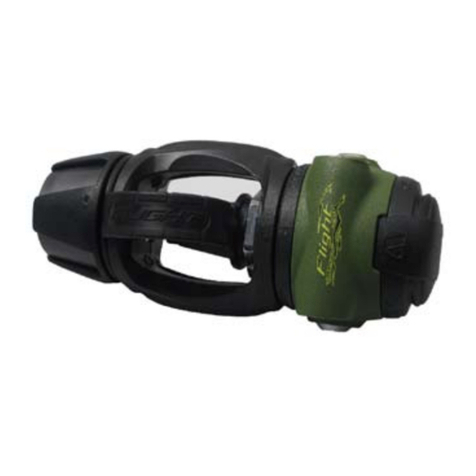
Apeks
Apeks Flight User manual
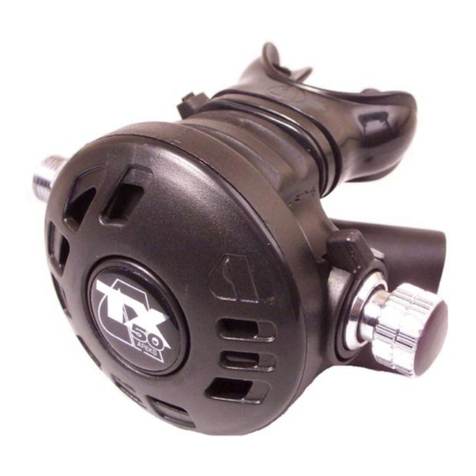
Apeks
Apeks TX100 User manual
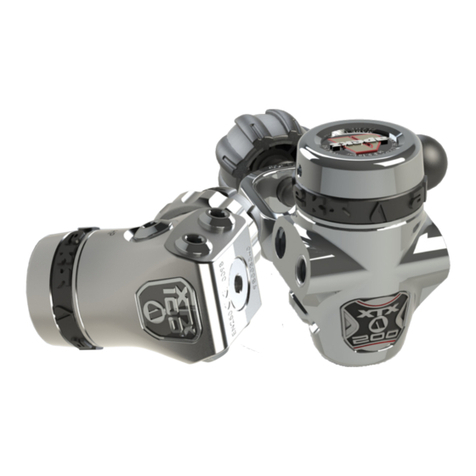
Apeks
Apeks XTX FSR User manual
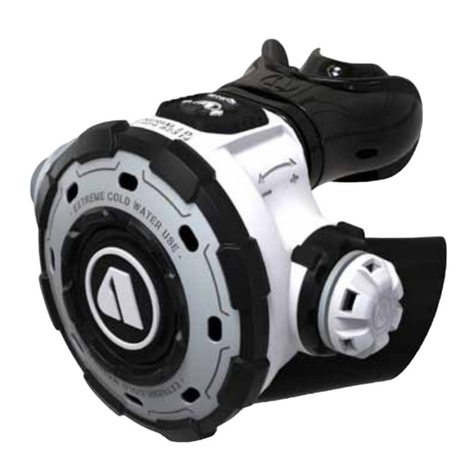
Apeks
Apeks MTX-R User manual
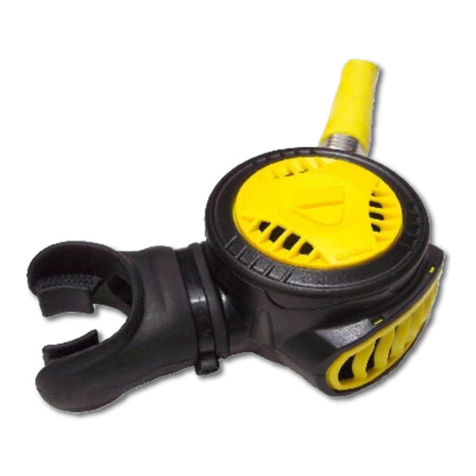
Apeks
Apeks Egress User manual
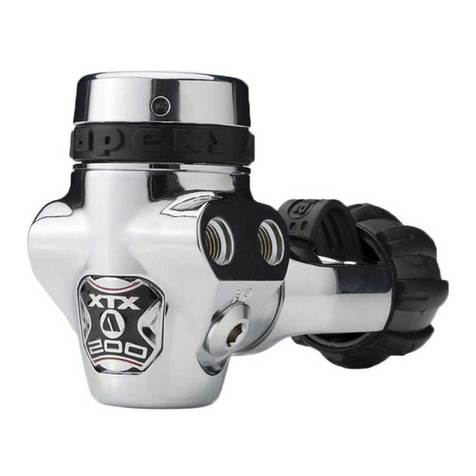
Apeks
Apeks FSR Series User manual
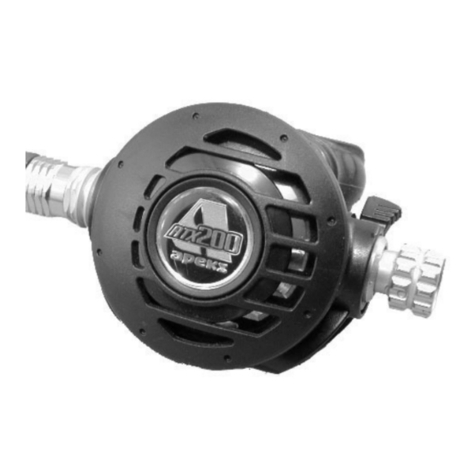
Apeks
Apeks ATX Second Stage User manual
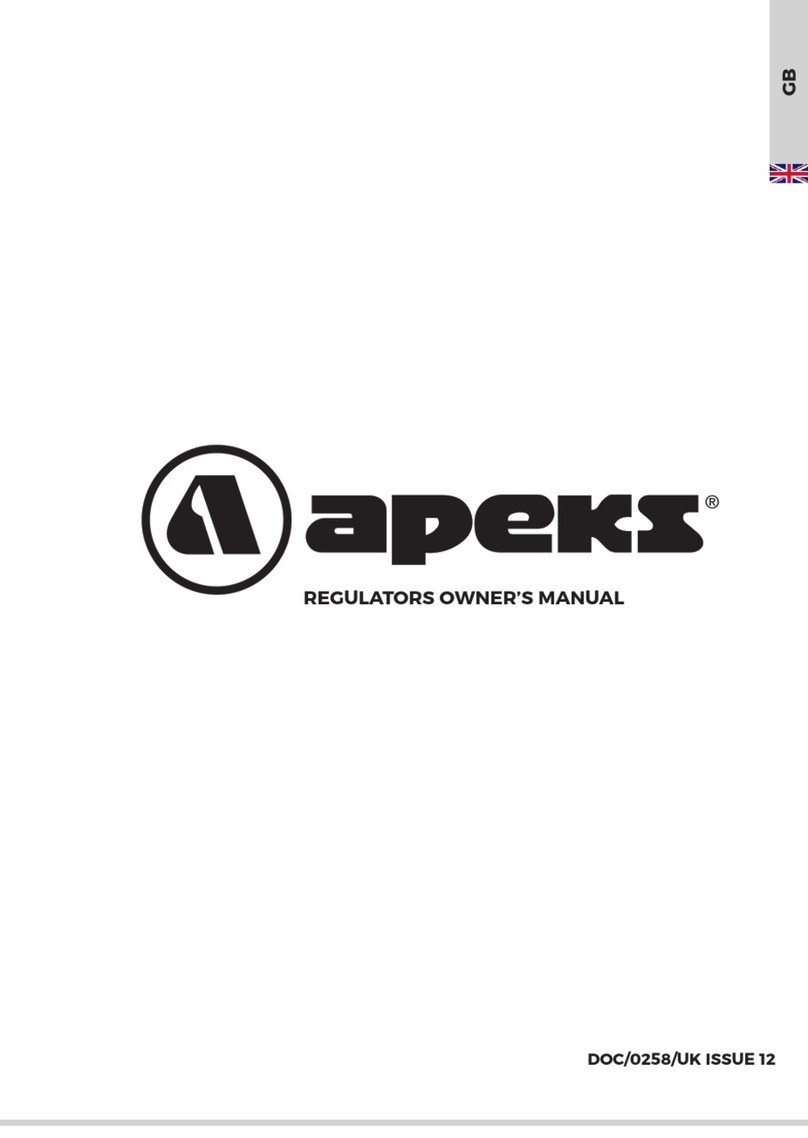
Apeks
Apeks TEK3/XTX50 User manual
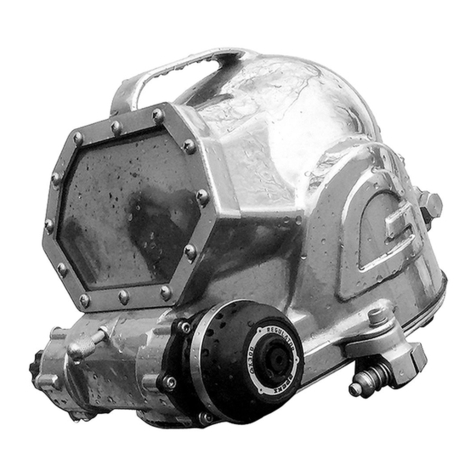
Apeks
Apeks GX300 User manual
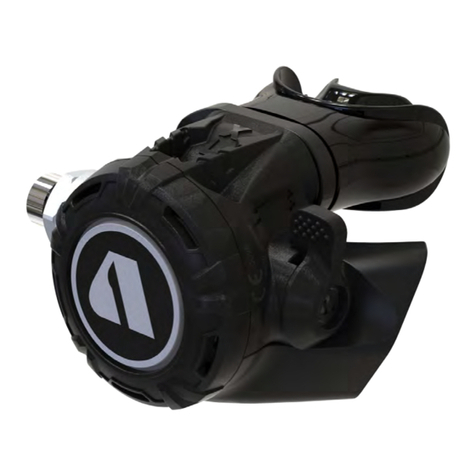
Apeks
Apeks XL4 SECOND STAGE User manual
